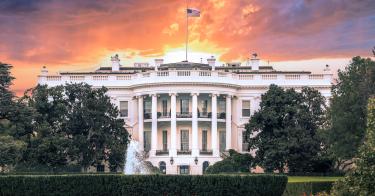Early in his administration, President Donald Trump signed an executive order directing all 15 of the departments of the federal government to submit plans within 180 days to “modernize and streamline their operations.”
In September, they did just that, and many have already begun to implement changes. The newly released 2019 budget is the clearest indication yet that the Trump administration is following through on its promise to cut back waste and redraw convoluted organization charts throughout the executive branch bureaucracy.
The White House’s budget calls for about $3 trillion in cuts to domestic government programs over the next 10 years. Getting Congress to implement all these cuts might be politically unrealistic, especially since Congress and the president just agreed to raise spending caps by approximately $300 billion over the next two years.
However, proposed cuts to redundant programs and unnecessary layers of bureaucracy are more likely to see the light of day than, for instance, an aggressive provision to cut 2 percent of nondefense discretionary spending every year for a decade, or a proposed 30 percent cut to the Supplemental Nutrition Assistance Program, better known as the food stamp program.
For the average American, eliminating redundant agencies and combining duplicative programs are bound to seem both commonsensical and long overdue.
A proposal to address overlaps in responsibility between the Food Safety and Inspection Service’s functions and those of the Food and Drug Administration is unlikely to cause protests or primary challengers. The same goes for the Department of Education’s plan to consolidate 13 overlapping programs saving $1.8 billion, or the Commerce Department’s proposal to eliminate the Economic Development Administration, which duplicates other federal grant programs.
While the general public is unlikely to notice—much less object to—these changes, some members of Congress certainly will. Congressmen and senators are typically loath to give up an agency, or kill a program, that is under the jurisdiction of a committee they serve on.
Even the most duplicative program and redundant agency gives a member of Congress another means of funneling federal aid to constituents or to claim credit for dealing with a pressing societal problem. Thus, an individual congressman or senator is not likely to strip away a grant program or regulatory body they oversee just because it is replicated in a distant corner of the sprawling bureaucracy.
What’s more, not all resistance to these reorganization efforts will come from inside the Beltway. Starting in the 1960s, many interest groups demanded the creation of new agencies and programs to deal with their specific concerns.
The consumer movement spearheaded by Ralph Nader prompted the creation of the National Highway Traffic Safety Administration. President Lyndon Johnson created the Department of Housing and Urban Development as a way of reaching out to the civil rights activists calling for more affordable housing and an end to housing discrimination. Republican President Richard Nixon and a Democratic Congress agreed to create the Environmental Protection Agency to placate surging environmental groups.
Witnessing the early successes of these groups, other interest groups pushed for the creation of still other narrowly targeted agencies and offices.
We now have what political scientists Richard Harris and Sidney Milkis dubbed the “public lobby regime,” defined by the close and permanent relationship between organized groups and small platoons of regulators and bureaucrats who serve as their watchdogs, liaisons, and sounding boards.
Even the Trump administration’s budget proposal—which, in many ways reflects the president’s commitment to “drain the swamp”—misses several opportunities to dismantle the public lobby regime.
For instance, the budget includes a Department of Agriculture request for $77 million “to provide rural communities with modern information access” via grants and loans subsidizing expansion of broadband wireless service.
There are reasons one might support this policy goal, but there is already an agency within the Department of Commerce—the Telecommunications and Information Administration—running a program to “expand broadband access and meaningful use across America.”
Similarly, the administration’s budget request includes $10 million for a Department of Housing and Urban Development program called the Jobs Plus Initiative, which is meant to “develop locally based, job-driven approaches to increase earnings … and financial literacy for residents of public housing.”
Giving people the skills to lift themselves out of poverty is certainly a noble ambition, but there is already an agency—the Education Training Administration within the Department of Labor—tasked with doing just this sort of work.
This sort of duplication, fragmentation, and redundancy might quell the passions of activists who advocate their creation, and it might also boost the popularity and power of congressional committee members. But these overlapping programs and agencies not only cost taxpayers tens of billions of dollars, they prioritize small, organized constituencies over the broad public interest.
As political scientist Theodore Lowi wrote, the current political system dominated by congressional committee members, interest groups, and like-minded bureaucrats results in “socialism for the organized, capitalism for the unorganized.”
When asked if he thought the Russian Revolution would spread beyond what was then the East bloc, Franz Kafka responded: “The Revolution evaporates, and leaves behind only the slime of a new bureaucracy.”
The president’s 2019 budget signals that he is ready to start scrubbing away the layers of bureaucracy left behind by our own quasi-revolutions—the progressive movement, the New Deal, and the Great Society—but it also demonstrates how sticky the mess has become.
This piece originally appeared in the Daily Signal



